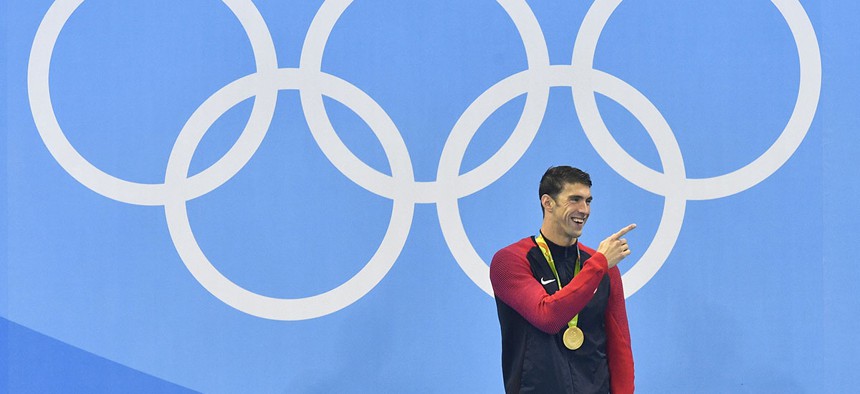Video: The Wearable Tech Helping Olympic Athletes Win Gold

United States' Michael Phelps laughs after he was awarded the gold medal during the medal ceremony for the men's 200-meter butterfly final during the swimming competitions at the 2016 Summer Olympics. Martin Meissner/AP
This is more advanced than your average Fitbit.
How does an athlete become an Olympian? Good genetics and a lot of hard work are partly the answer, but it turns out a little technology helps, too. At this year's Summer Olympics in Rio De Janeiro, athletes in a variety of sports have turned to wearable tech to make them that much better, faster and stronger.
The indoor cycling team members have smart eye wear called Solos that display important stats in real time as they cycle, while the U.S. women's indoor volleyball team members are using tech to track the height of their jumps.
» Get the best federal technology news and ideas delivered right to your inbox. Sign up here.
Many athletes are relying on a wearable called Whoop. The athletes enter in their training activities for the day into a corresponding app to calculate their recovery time. The app also breaks down the kind of sleep the athletes are getting, so they can see if they truly recover after a hard training session.
Swimmers Michael Phelps and Ryan Lochte have used Whoop in the lead up to the Rio games.
"We achieved a great deal of success before a lot of these devices came out," said Keenan Robinson, Phelps' longtime trainer. "I would say the way that it's changed is it just gives us a little bit deeper look into the athlete, the athlete's body and how they respond."
To learn more and see these athletes in action, check out the video below from CNET:
NEXT STORY: Making the cloud safe for intel



